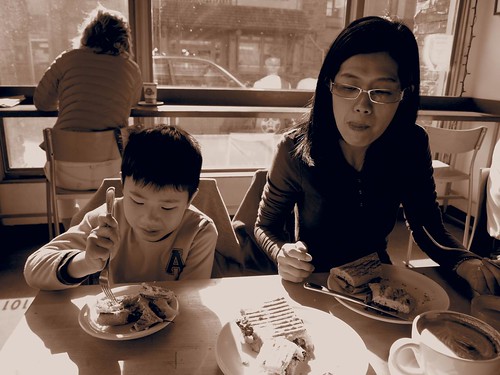
Great food, environment and service made Banff’s Wild Flour our favourite dining place
Finally, its Friday night! After a stressful work week, you can now let down your hair and party the weekend away.
The first item on the agenda? A slow dinner at the latest fine dining restaurant.
As you make your way to the much vaunted venue, several things pricked your senses. First, the carpark seems to be rather dark and gloomy. As you walk through the narrow staircases leading up to the restaurant level in the shopping centre, you noticed the cigarette butts and tissue papers strewn on the stairwell.
OK, you’ve reached the entrance of the restaurant. Sniff sniff…. Where is that peculiar odour emanating from… within? A loud voice interrupted your reverie: “Have you made a booking for tonight Sir?” chirped the enthusiastic waiting staff. You said yes and proceeded to walk to your seat with your dining partner.
Ah. Finally. Bliss. Or is it?
Wait a minute, isn’t that an odd looking stain on the table cloth. “Clang, chink, bzzzz, bonk..” goes the cacophony of sounds arising from the kitchen and the seats. The waiter serving you looks harried and appear ever ready to dash off for a 100 metre sprint.
When your food arrived after a good 20 minute wait, it is so dark that you can hardly make out what you’re eating. While talking to your partner, a loud K-pop tune emanated from your neighbouring diner’s table, further jarring your frayed nerves.
Sounds familiar?
In any consumer facing business, it is often the little things that can make or break a business. These hygiene factors or “atmospherics” cover the whole gamut of experience – from cleanliness of the environment, noise levels, lighting, aromas (or smells), and movement. Their absence or presence can sometimes tip the balance between good and great customer encounters.
To sensitize yourself to the “minor irritants”, learn to become a consumer yourself and notice your surroundings more carefully.
Do the following:
– Visit a successful competitor with a couple of family members and friends. It is good to have folks who are not within your industry so that you can get an outsider’s view.
– Pay careful attention to how the outlet’s environment is designed and maintained. Where are the key customer touchpoints? How are payments made?
– Notice how the staff of the outlet behaves. Are they responsive to customer needs? Is there a standard script that they use to put guests at ease?
– Pick up the good points and discard the bad.
In evaluating your own business, pay particular attention to factors that affect one’s five senses – sight, sound, scent, taste, and touch. Notice how the outlet’s staff behave and their body language to customers. Do a regular audit of various factors and list them down systematically.
When your customers visit the outlet, pay careful attention to how they react to the environment, staff and various stimuli:
– Are they frowning or smiling?
– Do they appear tensed and hesitant or relaxed and at ease?
– Are their conversations lively or hushed?
– Do they look lost and in need of assistance?
Paying attention to the little things can make all the difference in one’s business. It is critical to remove these minor pain points first before thinking about incorporating any “heroic” service gestures.
Often, it is the basics which could make or break a consumer business. By focusing on these fundamentals, you’re able to create positive “moments of truth” that go a long way towards building positive brand affinity and generating repeat business.
